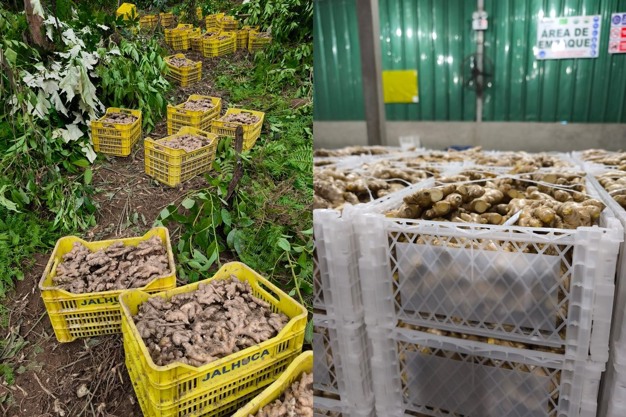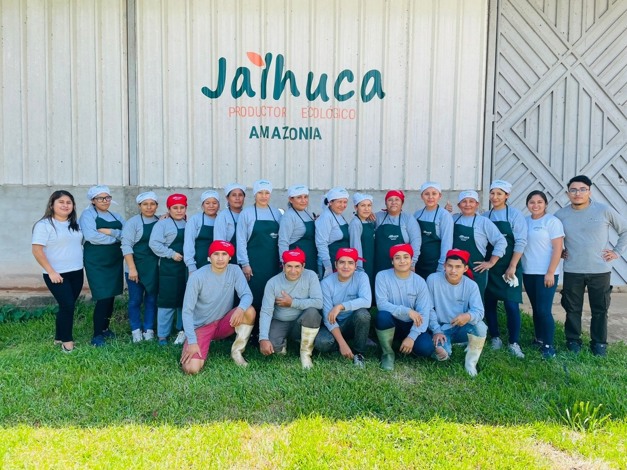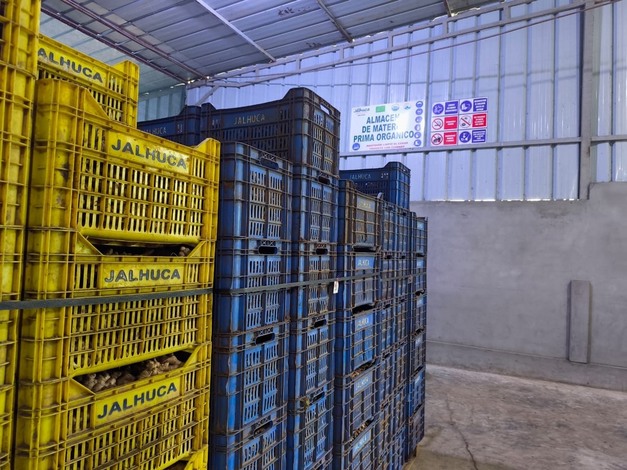Peruvian ginger, renowned for its high gingerol content and intense flavor, continues to gain ground in the international market, despite challenges such as volatile prices, raw material shortages and changes in the demand.
"Peruvian organic ginger stands out for its medicinal properties and its role in the functional food industry," says Marco Salas Cueva, general manager and partner of Jalhuca Amazonia. "This product, exported mainly to Europe and the United States, is suited for markets that appreciate both its quality and its impact on health. However, the last few years have been marked by price volatility and a limited supply, which have affected exporters."

"Peruvian exporters are dealing with a price war at source due to competition for limited raw material," says Marco Salas. "Shortages are leading to stiff competition in Peru, where many exporters don't have their own fields and rely on agreements with producers, who are often burdened by high costs. To counteract this, we have strengthened our production with our own fields to guarantee the supply and quality of the product."
The European market, which accounts for 60% of exports, has shown greater sensitivity to price changes, while the United States, which is the main importer of Peruvian ginger, with 40% of the total, has proven to be more dynamic and less averse to fluctuations, according to Salas. "The United States has accepted the high prices of recent seasons more easily and this has allowed us to expand our presence on both coasts of the United States," says the producer and exporter.

"This season, export prices have ranged from $25 to almost $40 per box. Such figures entail challenges for importers, but they are critical to maintain the viability of Peruvian exporting companies, which often have to pay high prices at source and obtain increasingly limited margins from their sales. Also, the shortage of refrigerated containers and the increase in freight rates, which have risen by up to 50% in some destinations, have further complicated the logistics, although we have been able to overcome these obstacles thanks to our solid reputation with shipping lines and logistics operators," says Marco Salas.
Ginger cultivation has benefited from public aid programs this year, and programs such as Procompite seek to strengthen the sector's competitiveness. The idea is to allow Peru to have a more stable exportable supply with the same quality that has earned it its place among the world's leading ginger suppliers. Jalhuca is also in the process of diversifying its product portfolio with crops such as Hass avocado and pitaya, aiming for a wider range in the future.

Mixing ginger with fruits in functional juices has given a boost to its global consumption, especially in the U.S. market. "Peruvian ginger is appreciated for its immunological properties, and combining it in drinks with orange or carrot makes it more attractive to consumers less accustomed to its intense spiciness," says Salas.
The season is expected to close with similar export figures as last year (50-60 containers) and with plans to expand into new markets, such as the UK and Canada. This, according to Marco Salas, shows the capacity of Peruvian ginger to adapt and thrive in a competitive global market. "We have a clear goal: to be a reliable and responsible supplier, capable of meeting the expectations of both our customers and the market when it comes to quality and sustainability," he says.
For more information:
Marco Salas Cueva
Jalhuca Amazonia S.A.C.
Tel.: +51 949 620 606
[email protected]
www.jalhuca.com
